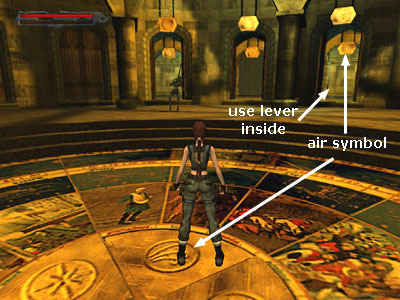

Eidos immediately pushed for a sequel, but Lara’s creator wasn’t interested. The gaming press raved about the huge levels and dynamic storytelling, and it topped sales charts, moving 7.5 million copies when all was said and done. But the team caught lightning in a bottle, releasing one of the best 3D action-adventures ever. Nobody would remember Lara Croft if Tomb Raider had been a dud - there were plenty of oversexualized female heroes in games before and after. Its fluid controls and immersive environments were like nothing else on the market at the time. It was a full-court press backed up by the fact that the game had turned out spectacular. High-res renders of Croft in sultry poses were put on billboards and buses. It wasn’t long before they were hiring models to dress like the character at trade shows and positioning her as a sex symbol for the digital age. Lara made her debut at E3 of that year, and publisher Eidos took note of the crowd reactions. And, with massive crunch, the game was on track for a November 1996 release. Using a custom-built design, they were able to build environments with an unusual amount of verticality to highlight Lara’s traversal techniques. The first game was built without a design document, with the group debating and discussing features and concepts until they came to a consensus. The six-person Tomb Raider team quickly became a tightly-knit unit, with Heath-Smith giving them a remarkable amount of freedom. His cohorts recall Gard spending tremendous amounts of time on Lara’s animations, making sure her leaps, rolls, and movements were fluid and believable. Although Lara’s physical features were… exaggerated, her sex appeal was only one of many factors that the designer wanted to emphasize. I thought that what was interesting about her was she was this unattainable, austere, dangerous sort of person,” Gard said in a 2004 interview. “She wasn't a tits-out-for-the-lads type of character in any way. But it wasn’t long before Gard himself worked out what Lara Croft would be: a no-nonsense adventurer who would become an unlikely sex symbol. Some say that Gard’s younger sister Frances was the inspiration, with other employees claiming the title was originally going to feature a male Indiana Jones type. Who’s That Lady?Ī game needs a protagonist, and the inspiration for what would become Tomb Raider is still shrouded in a little mystery - as it should be. Artist Toby Gard was one of the first to pipe up, suggesting a third-person adventure title about exploring hidden tunnels and chambers deep below Egyptian pyramids.

The cutting-edge polygon power of the machine was obviously the next big thing, and he immediately assembled Core’s staff to get them thinking about the best way to harness it. While in America, Heath-Smith met with Sony’s Ken Kutaragi and got a demo of the upcoming PlayStation console. But a trip to the United States by Core chief Jeremy Heath-Smith lit the spark that would launch their greatest success. But as consoles came to dominate the market in the early 1990s, they pivoted to the Super Nintendo and Sega Genesis, as well as less storied consoles like the 3DO. When a group of Gremlin employees struck off on their own in 1988 and set up shop in Derby, they took the name Core Design.Ĭore started out on familiar turf, porting arcade games to home computers and developing action titles like Rick Dangerous in-house. One of the leading British studios was Gremlin Graphics, which had hits like the Monty Mole series. Platforms such as the ZX Spectrum and the Commodore 64 were perfect for small studios to knock ideas out quickly, and incredible talent flourished all over the land.

The United Kingdom in the 1980s was a hotbed of game development.
TOMB RAIDER ANGEL OF DARKNESS NEPTUNE LEVER SOFTWARE
Best Hosted Endpoint Protection and Security Software.


 0 kommentar(er)
0 kommentar(er)
